Pork, Pork, and More Pork: Bondiola Argentina
Bondiola is the Argentine Spanish name for a cut of pork. We don’t have an equivalent word in US English I suppose, in part because it’s not a cut of meat that one can easily buy here. If we did have a word for that cut of pork, it might be the Italian word for this cut, coppa, which is used by salumerias in the making of cold cuts like capocollo or its namesake coppa.

The Wikipedia entry for the Bondiola sandwich describes thick slices of pork shoulder that are grilled and dressed with lemon juice and garlic. This sandwich is, according to Wikipedia, served in brioche along with a variety of condiments and cheeses, and is sometimes referred to, in the Argentine meat-bread style of sandwich-naming portmanteau (e.g., Chorizo sausage + pan–Spanish for bread–becomes choripán, morcilla (blood sausage) + bread is morcipán, etc), as bondipan.
Bondiola Curada
Yet in Argentina bondiola, like coppa in Italy, is a popular target of the charcutier’s, or I suppose chanchero’s art. Google results show plenty of bondiola sandwiches that feature thin slices of dark red cured shoulder, streaked with white fat, laid atop crusty bread in sandwiches that would do any Italian deli proud.
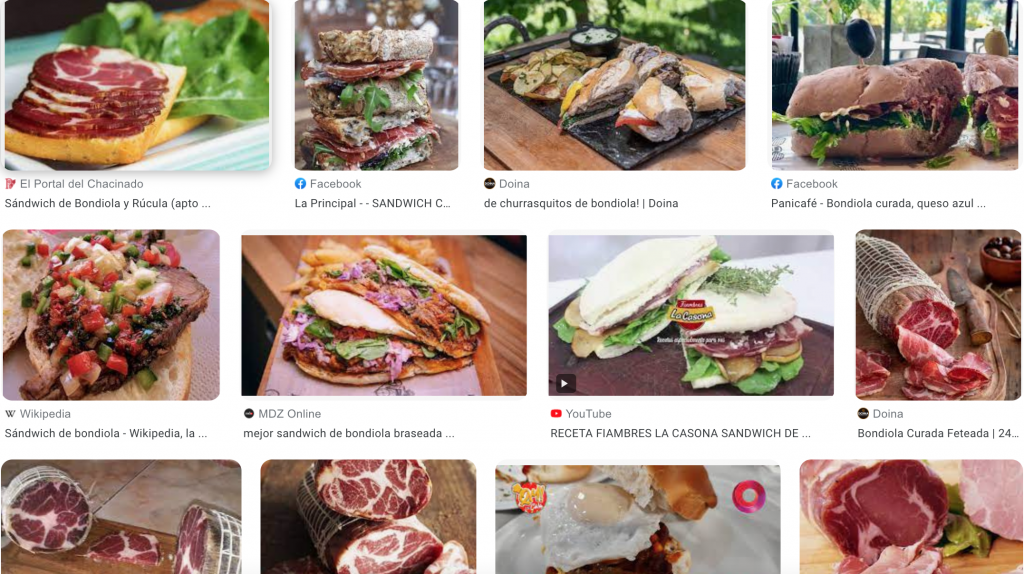
I don’t have any Argentine bondiola curada on hand or enough time to cure, dry, and age one myself. I did spring for a good-sized chunk of coppa, though, and I acquired some Argentine cheese called provoleta at Argentine deli Buenos Aires Liquor & Deli on North Cicero Avenue in Chicago.
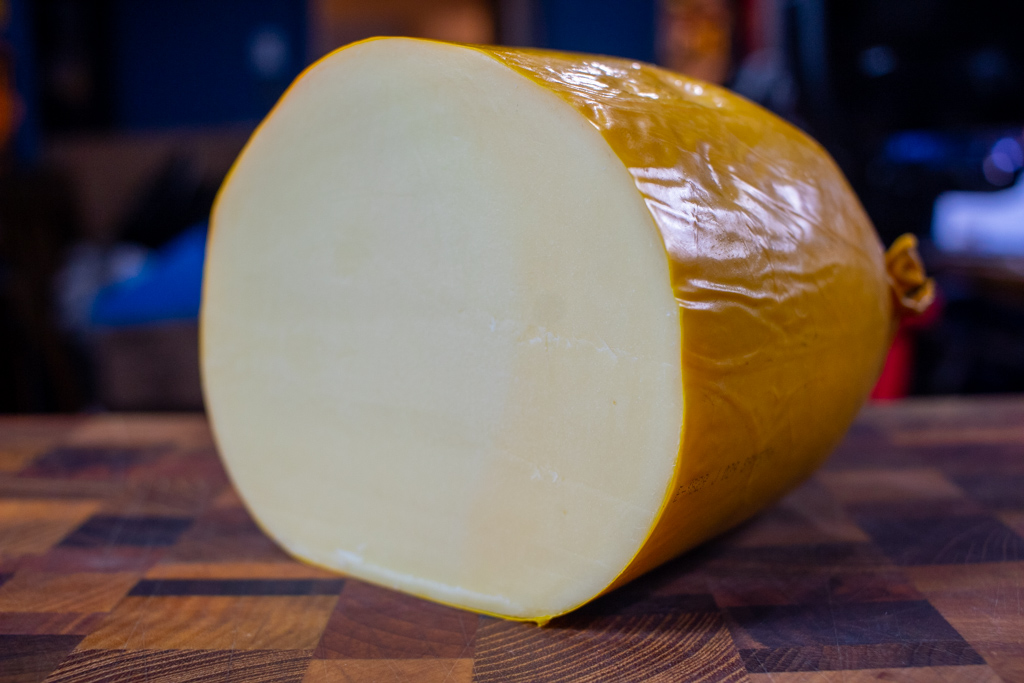
Provoleta, sharper and saltier than the standard mild American provolone (though not as sharp as its aged Italian counterpart) is not typically sliced thin and served with cold cuts in sandwiches. More often than not, it is sliced thick, perhaps an inch thick, and grilled over charcoal or fried in a pan to be served communally with bread and chimichurri.

However, in a section of baguette, with thin, doubled-over slices of my bondiola stand-in coppa, with somewhat wintery slices of tomato seasoned with chimichurri and a layer of shredded lettuce, it made for a very Italianesque false bondiola sandwich.
Sandwich-makers, you know as do I that when you add sliced tomato to a sandwich, you must season that tomato with salt and pepper. It’s the rule, and it’s a good rule, as this helps draw out the uniquely savory character of the tomato to enhance the sandwich. I have for you today a proposed corollary of that rule: you can season your tomato with chimichurri instead. Yes, chimichurri is most properly used as a condiment for chunks of meat, but the flavors of chimichurri enhance a tomato every bit as well as they do a woodfire-grilled filet.
Chimichurri
Ingredients
- 1/2 cup olive oil extra virgin
- 1 bunch parsley finely minced
- 2 tbsp red wine vinegar
- 5 cloves garlic minced
- 2 fresh fleshy red chilies (such as very ripe jalapenos) finely chopped
- 1/2 tsp dried oregano
- salt and pepper to taste
Instructions
- Mix all ingredients together thoroughly in a bowl
- Let sit for at least one hour before using. Use within a day or two. If refrigerating, allow to come to room temperature before using
This was a terrific sandwich–a bondipan it is not, but that chimichurri gives it at least a little Argentine flavor. This sweet coppa is flavored with black pepper, allspice, and nutmeg, whereas an Argentine bondiola would be flavored more like a capocollo, with paprika and pepper. It is otherwise a dry-cured and aged meat much like bondiola though, and its concentrated flavor is powerful, best sliced very thin and combined with bread in a sandwich, or with fruits, cheeses, and nuts on a charcuterie plate.
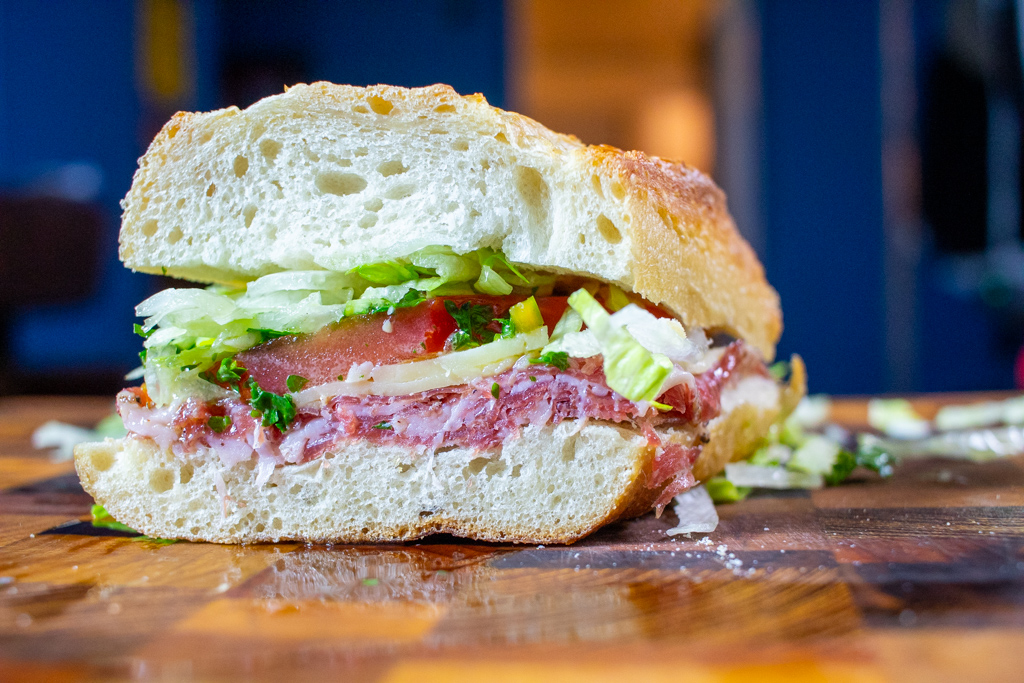
It was, in a sense, a bondiola sandwich. But it was not the bondiola sandwich we are looking for.
Bondiola de Cerdo
The majority of bondiola sandwich recipes I found online called for a seasoned, slow-cooked, shredded or pulled form of pork that is referred to as bondiola de cerdo, or braised pork shoulder. Braising generally consists of browning a cut of meat in a pan before slowly wet-roasting it, though many of those recipes were simply slow-cooked in liquid without the browning step. The version I settled on did a kind of reverse braise, starting with a covered, slow roast of the pork in citrus and beer before shredding it and returning the shredded meat to the oven to brown and reduce the liquid.
Bondiola de Cerdo
Ingredients
- 5 lbs pork butt, sliced into thick sections
- 2 tbsp sweet paprika
- 2 tbsp cumin powder
- 1 tbsp kosher salt
- 1 tbsp dried oregano
- 2 tsp black pepper
- 1 tbsp onion powder
- 1 tbsp garlic powder
- 1 tsp cayenne pepper
- honey mustard
- 6 oranges juiced
- 3 lemons juiced
- 12 ounces mild beer
- 1 head garlic paper removed and separated into cloves
Instructions
- Combine the paprika, cumin, kosher salt, oregano, black pepper, onion powder, garlic powder, and cayenne and mix well. This combination is your spice rub
- On a rack in a baking pan, slather honey mustard entirely over the surfaces of the pork sections as a binder
- Coat the slathered pork in the spice rub and refrigerate overnight to allow the spices to adhere to the pork
- The next day, preheat the oven to 300° F
- Remove the rack from the baking pan, leaving the pork directly on the bottom of the pan
- Add the orange juice, lemon juice, beer, and garlic cloves to the pan around the pork. Cover the pan tightly with foil and roast in the oven for 2 hour or until the pork is above 190° F and pulls apart easily
- Shred the pork, return to the pan with the juices. Turn the oven up to 350° F and return the shredded pork to the oven to brown and to allow the liquid to reduce
- Serve in long rolls such as bolillo with chimichurri, salsa criolla, mustard, cheese, or whatever condiments you prefer.
It has been nearly 8 years since I wrote about choripán and morcipán, but I still remember vividly that delightful combination of the savory grilled meats with the intensely flavored chimichurri and the surprisingly effective condiment salsa criolla, a simple combination of onions, peppers, tomatoes and garlic with olive oil and vinegar. Unlike its Peruvian counterpart, it is not a spicy condiment but rather mildly sweet and pungent and overall fresh-tasting, a solid accompaniment for sausages or, I presumed, the pulled pork sandwich I was making this day.
Salsa Criolla (Argentina)
Ingredients
- 1/2 red bell pepper diced
- 1/2 green bell pepper diced
- 1/2 white onion finely diced
- 1 tomato diced
- 2 cloves garlic minced
- 1/4 cup olive oil extra virgin
- 3 tbsp red wine vinegar
- 1 tsp crushed red pepper
- 1 tsp fresh oregano finely minced
- Salt and pepper to taste
Instructions
- Combine all ingredients thoroughly in a bowl
- Refrigerate for at least one hour before serving
I was right. This was every bit as good a combination for the pork as it had been for the sausages. These savory, silky-textured strands of “braised” pork led with a malty beer aroma punctuated by the sweet/sourness of the orange and lemon juices and given a slow-burn backend spiciness by the cayenne-spiked rub. This meaty mix was an ideal platform for the sharp, spicy, garlic/herb flavor of the chimichurri and the sweeter, crisper salad-like “sauce” of salsa criolla.
The demibaguette-like roll I used came from a grocery store bakery and it was fine, though possibly less sturdy than a big juicy pile of pulled pork really required. And while this sandwich could have included many other accompaniments–a mayonnaise-based sauce, a simple shredded cabbage slaw, onions, tomatoes, lettuce, barbecue sauce, mustard, cheese, almost anything, really–I do like this combination of sauces. While I have not been to Argentina, these flavors taste like Argentina to me.

Yet this is still not the sandwich as described by Wikipedia. Where are these sandwiches of sliced, grilled pork that the legends speak of?
Sandwich de Bondiola Completo
In Buenos Aires, in the rebuilt Puerto Madero neighborhood, surrounded by canopied tables along one of the small lakes dotting the Reserva Ecológica Costanera Sur, a nature preserve built on reclaimed land between the old docks and the broad Río de la Plata, there is a small food cart called Parrilla el Chorimovil selling typical Buenos Aires street food: hamburgers, choripán, provoleta, and a sandwich that one UK food blogger has called The Best Sandwich In The World (you know how we like hyperbole here), the Bondiola Completo.
Nice intro, eh? Sadly, I’m not sure it is 100% true. Though the text of the above video claims that this is the sandwich Eve Bidmead called out as the best in the world, her photos do not appear to match the appearance of this cart or this sandwich, and her post specifically references a neighborhood called San Telmo just to the west of Puerto Madero. Still, I liked the look of the sandwich in the above video and I’m willing to make this my Bondiola Completo.
To recreate it, I sliced pieces off the non-bone end of a pork butt. I wouldn’t call them thick slices, a quarter inch maybe? But in the video above, the slices appear fairly thin. I cooked them on my stainless steel flattop. I used the same demibaguettes as before, but toasted them on the griddle alongside the pork as it cooked. Completo can mean many things when applied to sandwiches in different parts of South America, but according to the above video, in this case “completo” means that this grilled pork sandwich gets a fried egg, cheese, and ham added to it. (I was out of ham, but I happened to have plenty of coppa, so I used that instead)
I seasoned these pork slices on the griddle with an ad-libbed spice mix of salt, pepper, cumin, and oregano. As they cooked, I basted them with a mop of water, lemon juice, and finely minced garlic, for a little extra flavor and to keep them nice and moist. As in the YouTube video above, I fried the egg on the flattop as well, adding my faux “ham”–3 thin slices of coppa–atop the yolk before the flip, and melting a slice of provoleta on the egg to finish.
I served these Bondiolas Completo, as before, with my favorite Argentine combination of condiments, that potent pairing of chimichurri and salsa criolla. They were integral to my enjoyment of the sandwich. The egg was fine, the “ham” and provoleta nice but unnecessary. That pork, though…
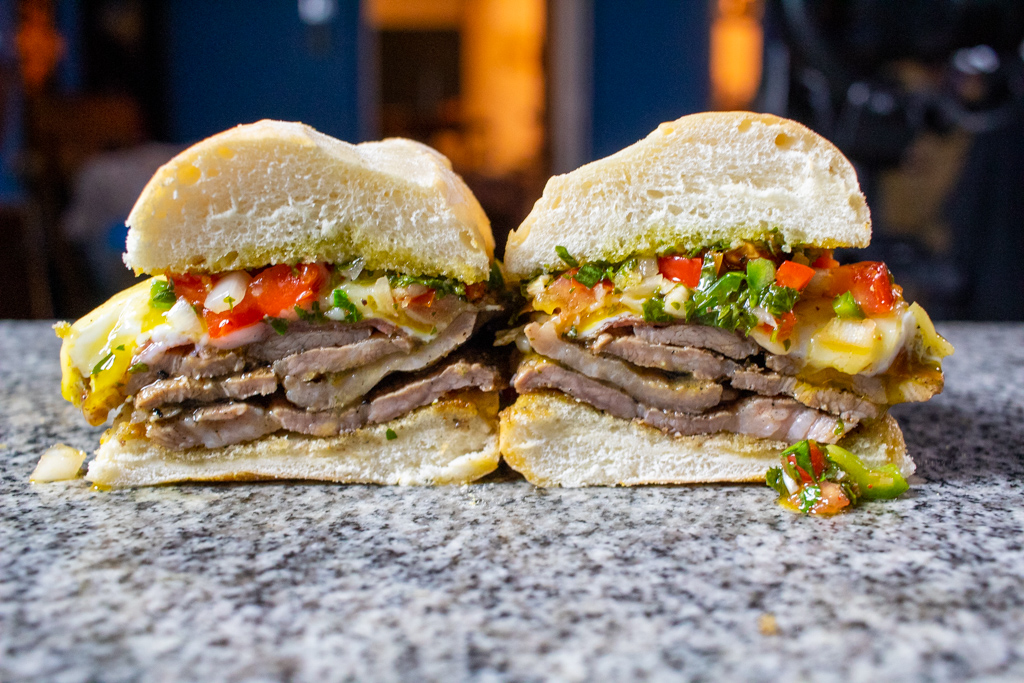
The cross-section makes plain that this pork, though grilled long enough to brown its surface thoroughly while toasting the bread, cooking the egg, and melting the cheese, has remained moist throughout. In part this is due to the cut itself, which has a good amount of intramuscular fat, and in part it is due to the technique of basting with lemon garlic water as it cooks.
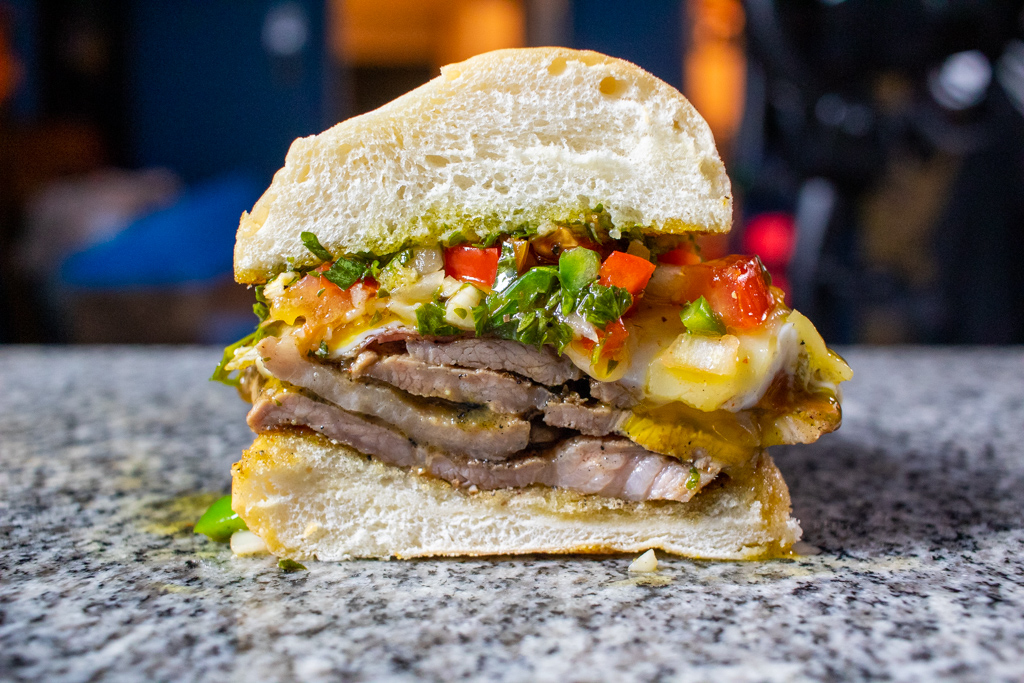
It was my favorite of the three bondiola variants I tried, though I’m still not sure I’ve captured the essence of a bondiola. Any Argentine Tribunal fans out there who’d like to clue me in?

I like sandwiches.
I like a lot of other things too but sandwiches are pretty great











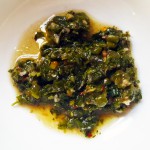
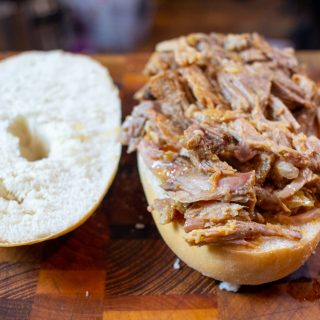
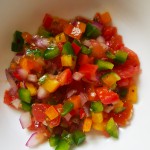





















hi, argentinean here! i’m fascinated with your dedication to following the recipes. personally i find you did a very deluxe bondiola sandwich. as far as i know, while some may add more spices, the “preparation” for the meat is to salt it with marine salt and leave it for a while before going directly to the grill. culturally, bondiola is an affordable (in relation) cut and because of the fat its a bit juicer to get than chicken, and many argentineans are used to eat it from a street vendors, like in the video. breadwise i rarely see any preocupation, and the cheese tends to be a regular machine cheese and the ham is actually there because ham and cheese are a very basic sample of the cuisine (what a peanut butter and jam sandwich is for the usa as a snack, its the ham and cheese sandwich here) and many “completes” include fried egg, tomato and lettuce. there are no taboos to adding mayo or any condiments
however, i must admit, i am not a fan of the preparation mentioned above: it is, after all, the cheapest way to eat a bondiola sandwich and thus not really cared for. in fact, as i’m typing this i can feel the sounds of the cars passing next to the street, the chill of the street and the uncomfortable plastic chairs where one may eat them. i do not recommend you undo all this process on the sandwich, instead just add diferent things to it. the marination is a very good idea and the spices are accurate to what an argentinean will have at home. in general lines, a fancier bondiola completa (plural, bondiolas completas) will have arugula and cherry tomatoes, and if not with barbecue sauce, then with remains of it’s slowcooking juices, perhaps with a bit of liquid smoke to give it an even nicer flavor. for provoleta/provolone, many people here condiment it too (most come pre-spiced too!). for the provoleta i’d say to add oregano and chilly flakes as base, and then whatever condiment you feel will go best with the amount of flavours already present in the whole sandwich
that’s all. i like what you did with the sandwich a lot! greetings from argentina!
Thank you for the thoughtful and helpful advice! I really appreciate hearing from someone who is part of the culture how I did, especially when I didn’t quite get things rightl. It will help me get it closer next time, if I revisit this sandwich!